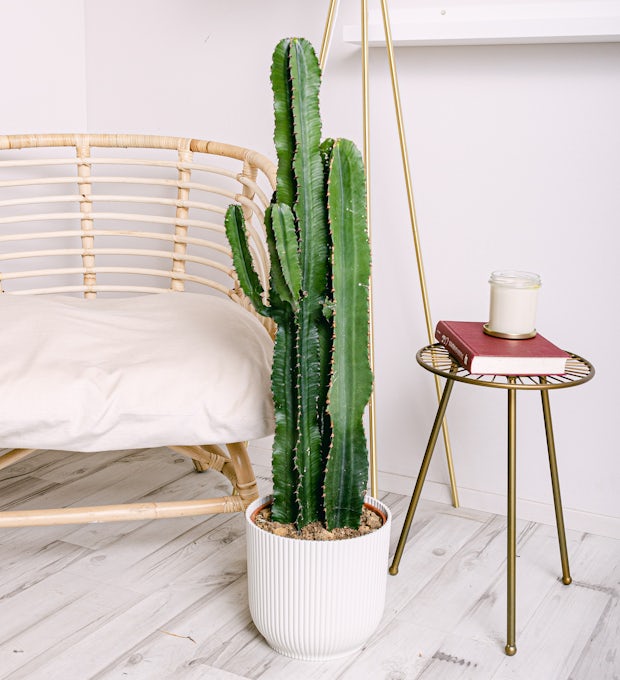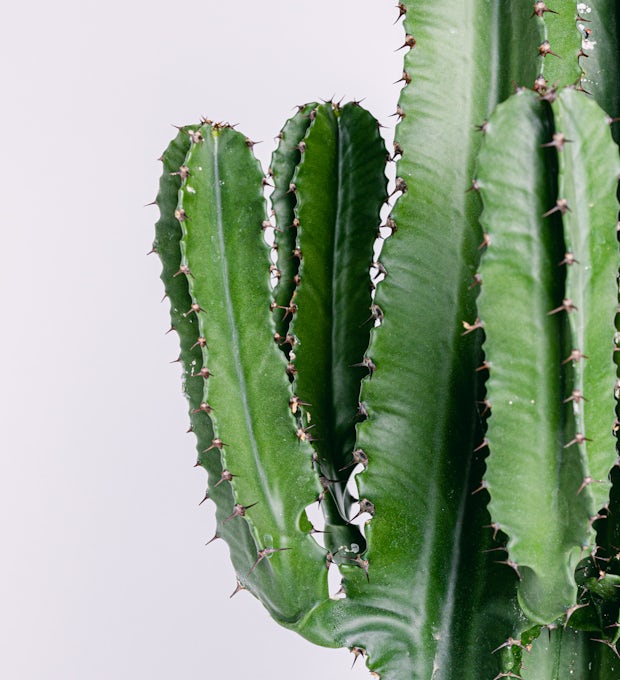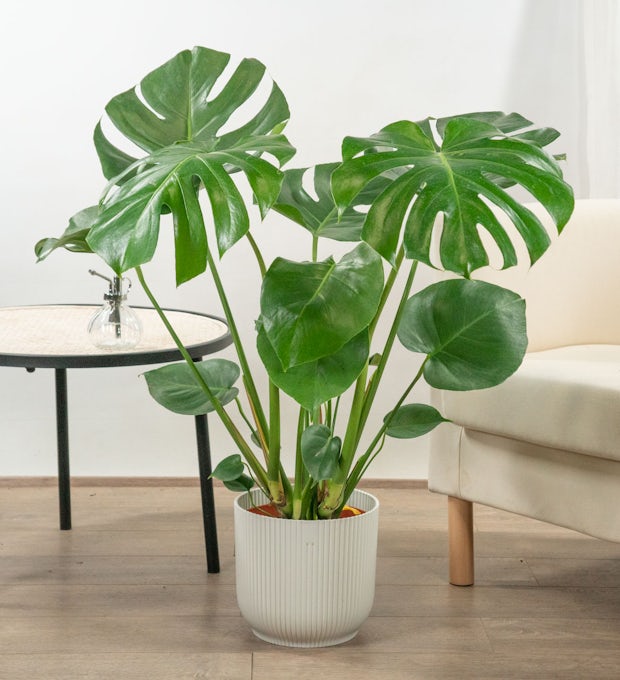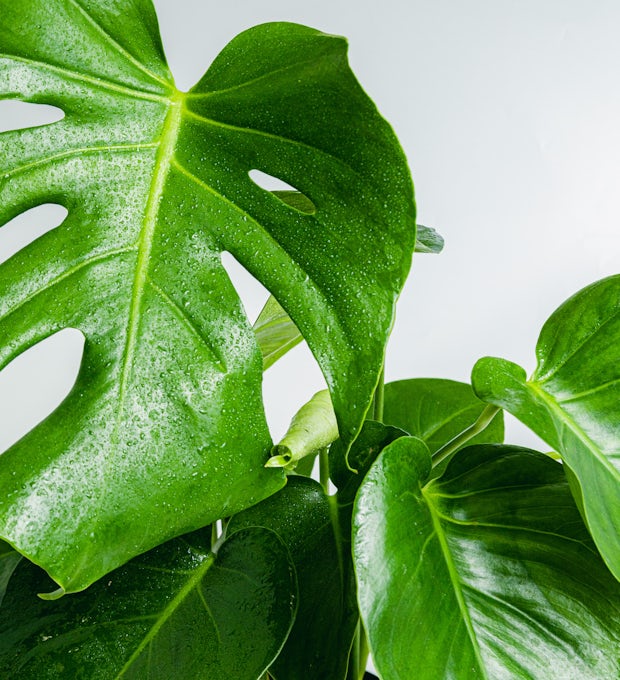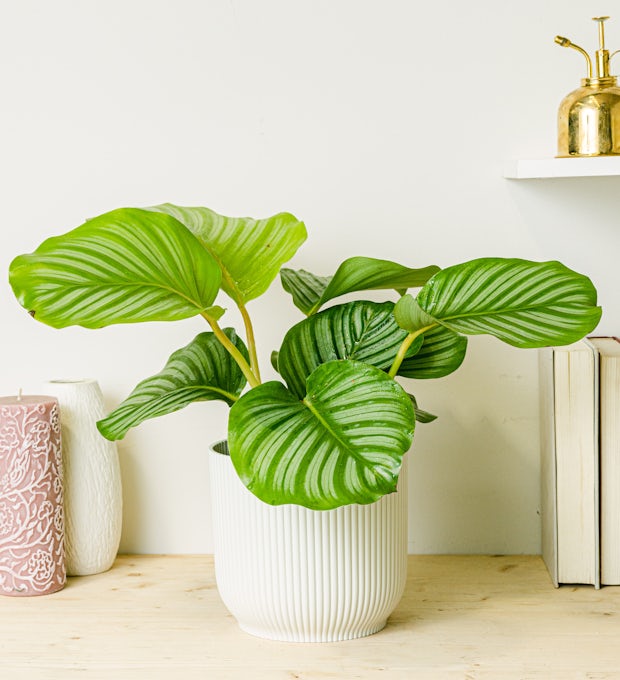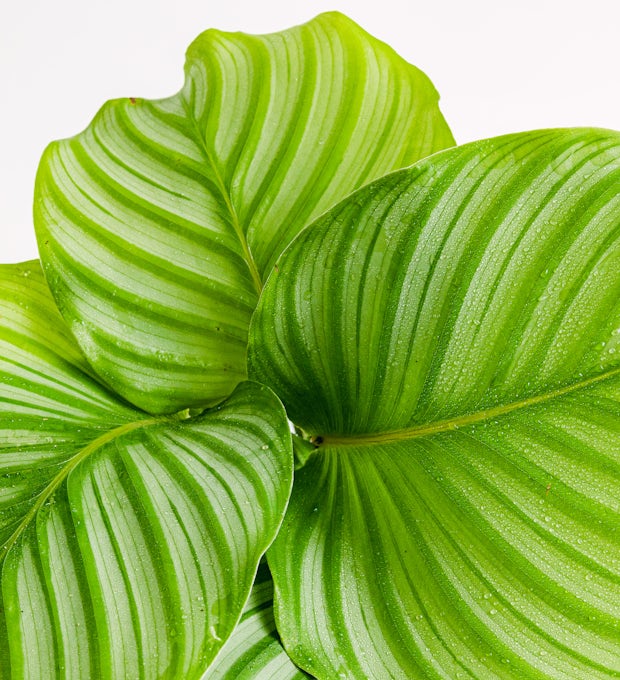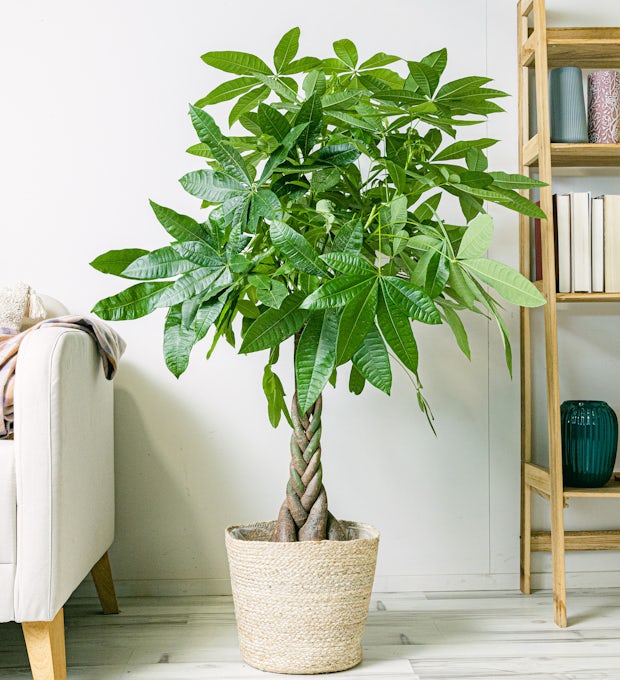Houseplants are a great option for improving air quality at home, as well as being a natural and decorative way to add life to any space. In this article, we'll explore the benefits these plants can have for our health, the best options for purifying the air, and how to properly care for them. We'll also discuss plants that don't require a lot of light, ideal for those who don't have windows with a lot of sun exposure. If you're allergic or just want to add a touch of green to your home, we've got some suggestions for you. In addition, we will teach you how to create an indoor vertical garden to maximize the available space. Find out everything you need to know about houseplants!
Health Benefits of Houseplants
Not only are houseplants a beautiful and natural home décor, but they also offer many health benefits. First, houseplants purify the air by absorbing toxic gases and releasing fresh oxygen. This helps reduce the symptoms of respiratory diseases such as asthma and bronchitis. Additionally, having plants in the home has been shown to help reduce stress and improve mood. The presence of plants in a room can lower blood pressure and heart rate, leading to a sense of calm and relaxation. Plants have also been shown to improve concentration and productivity, making them ideal for placing in work or study spaces. Another advantage is that plants can increase the humidity of the air, which helps prevent dry skin and respiratory problems. In short, having houseplants in the home is a natural and effective way to improve air quality, reduce stress, and improve overall health.
Best Houseplants for Purifying the Air
There are several houseplants that are known for their ability to purify the air in our homes. Among the best houseplants for this purpose are peace lily, bamboo palm, mother-in-law's tongue, and potus. These plants are especially effective at removing common toxins in the air, such as formaldehyde, xylene, and benzene. The peace lily is a hardy plant that can survive in low-light conditions and is capable of removing multiple pollutants from the air. The bamboo palm is an elegant plant that also tolerates a lack of light and helps remove harmful chemical compounds. Mother-in-law's tongue, also known as sansevieria, is a hardy plant that can survive in low-light conditions and is very efficient at filtering the air. Pothos is a climbing plant that in addition to purifying the air, also helps control humidity levels in the home. Not only do these plants add beauty and freshness to our indoor spaces, but they also help us maintain a healthier and cleaner environment.
We ship plants to all locations, you can see more options here.
How to Care for and Maintain Your Houseplants
To keep your houseplants healthy and healthy, it's important to follow some basic care. First of all, you need to make sure that you water them properly. Each plant has different water needs, so it's important to do your research and know the specifics of each. Generally, it is advisable to water them when the top layer of soil is dry to the touch. Avoid overwatering, as this can cause root rot. In addition, it is important to provide them with the right amount of light. Most houseplants require bright indirect light, so place them near a window or in a well-lit spot. However, avoid intense direct sunlight as it can burn the leaves. Another important aspect is fertilization. Houseplants generally need to be fertilized once a month during the spring and summer, and less frequently during the fall and winter. Use a specific fertilizer for houseplants and follow the manufacturer's instructions. Also, remember to regularly clean the leaves of your plants to remove dust and allow them to breathe properly. Finally, pay attention to potential pests such as spider mites or mosquitoes and take steps to control them if necessary. By following these tips, you will be able to enjoy beautiful and healthy houseplants in your home.
We ship plants to all locations, you can see more options here.
Houseplants that don't require a lot of light
Houseplants that don't require a lot
of light are a great option for homes that don't have a lot of natural light. These plants are able to survive in low-light conditions, making them the perfect choice for interiors with few windows or dark rooms. Some of the most popular plants that adapt well to these conditions are pothos, sansevieria, and Boston fern. Pothos is a climbing plant that is characterized by its shiny green leaves, and is capable of purifying the air of toxins such as formaldehyde and benzene. Sansevieria, also known as mother-in-law's tongue, is a hardy, low-maintenance plant that can survive in low-light conditions and dry air. Finally, the Boston fern is a hanging plant with leafy, delicate leaves, ideal for adding a touch of green to dimly lit spaces. Not only are these plants decorative, but they also contribute to improved indoor air quality by absorbing carbon dioxide and releasing oxygen during photosynthesis. If you're looking to add a natural touch to your home but don't have a lot of light, these houseplants are the perfect solution.
Houseplants to decorate your home
Not only are houseplants beneficial to your health, but they can also be used as decorative items in the home. There are a wide variety of houseplants with different shapes, sizes, and colors that can complement the décor of any space. Some popular choices include the Monstera deliciosa, known for its large perforated leaves that add a tropical twist; Sansevieria, also known as "mother-in-law's tongue," is a hardy, easy-to-maintain plant that adds an interesting texture to any environment; and the Ficus lyrata, with its violin-shaped leaves, is an elegant and sophisticated choice for more formal spaces. In addition, hanging plants such as Hoya carnosa or Pothos dorado can add dimension and movement to any room. It's important to note that when choosing plants to decorate your home, you should consider the size of the space and the amount of natural light available. You can also opt for creative pots and stands to add an extra touch of style to your houseplants. In short, houseplants are a natural and inexpensive way to add life and color to any space in the home.
How to Create an Indoor Vertical Garden
Creating an indoor vertical garden is a great way to incorporate plants and greenery into tight spaces. This type of garden consists of placing plants in vertical structures, such as shelves or panels, allowing you to make the most of the available space. To create an indoor vertical garden, it's important to keep a few key things in mind. First of all, you need to choose the right plants for this type of garden. Plants such as ferns, pothos, succulents, and ribbons are great choices, as they adapt well to limited spaces and don't require a lot of maintenance. In addition, it is essential to ensure that you have a proper irrigation system in place so that the plants receive the necessary amount of water. There are automatic irrigation systems that make this task easier. Another important aspect is the location of the vertical garden. It is recommended to look for a place where the plants receive the right amount of light, avoiding direct exposure to the sun for long periods. It is also important to consider the design and arrangement of the plants to create an attractive visual effect. An indoor vertical garden not only adds beauty and life to spaces, but it can also improve air quality by filtering out toxins and increasing oxygen levels. So if you're looking for a creative and practical way to incorporate plants into your home or office, consider creating an indoor vertical garden.
Ideal Houseplants for Allergy Sufferers
For allergy sufferers, having houseplants can be a challenge. However, there are some plants that can help purify the air and reduce allergy symptoms. Sansevieria is an ideal plant for allergy sufferers, as it is hardy and easy to care for. In addition, it helps remove formaldehyde and benzene from the air. Another option is the bamboo palm, which is a low-maintenance plant and helps remove carbon dioxide from the air. English ivy is also a good choice for allergy sufferers, as it is effective in removing mold from the air. Other recommended plants are spider, peace lily, and snake plant. It is important to remember that plants are not a cure for allergies and that if symptoms persist, a doctor should be consulted. In addition, it is recommended to avoid flowering or aromatic plants, as they can cause allergic reactions in some people. When choosing houseplants for allergy sufferers, it's important to do research on their air-purifying properties and make sure they're safe for your home.
Houseplants are not only a natural and effective way to purify the air in our home, but they also have multiple benefits for our health. From reducing stress and improving sleep quality to increasing productivity and concentration. In addition, there are a variety of houseplants that do not require a lot of light and are ideal for allergy sufferers. You can even create an indoor vertical garden to decorate your home and improve air quality at the same time. It's important to care for and maintain our houseplants to ensure they continue to provide these benefits for a long time. How about we start introducing more houseplants into our homes and take advantage of all their benefits?
